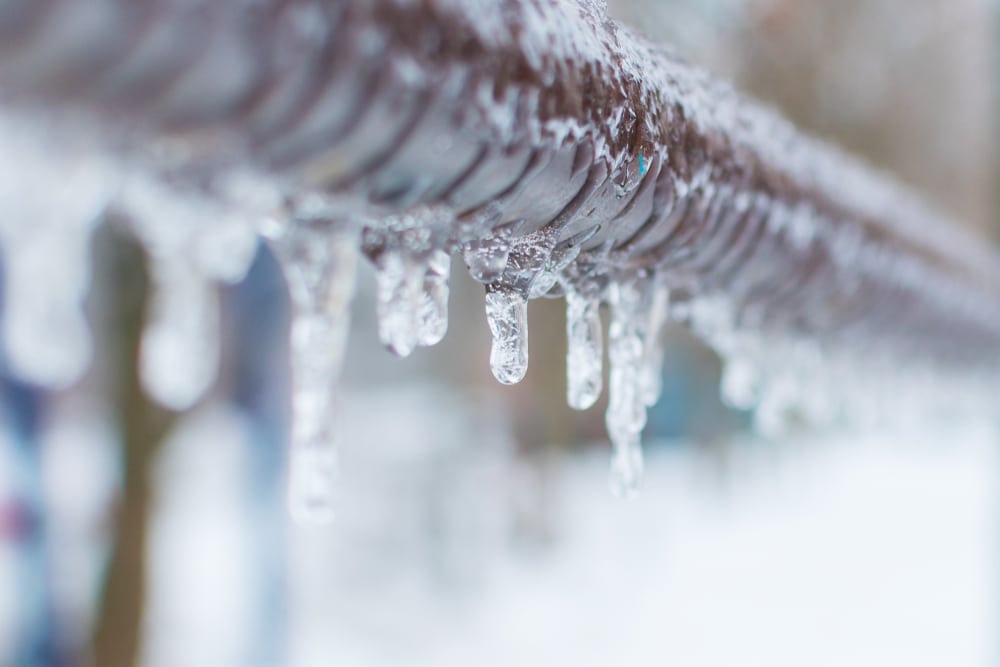The colder months of the year bring about a whole slew of potential plumbing issues. One plumbing problem that can cause a lot of damage is frozen pipes. When temperatures drop to below freezing water inside of your pipes can freeze solid. The trouble with this is that when water freezes it expands which in turn can cause damage to your pipes. Burst pipes can lead to a lot of damage to the surrounding area so it is important to treat frozen pipes quickly.
Who Is At Risk
In areas that are prone to freezing temperatures, many homeowners already take preventative measures. However, pipes that are located outside, in attics, or in crawl spaces are susceptible to freezing if the proper precautions are not taken. Vacant properties are also at a higher risk, as no one is there to maintain the temperature of the home and monitor for the signs of frozen pipes.In addition, homes that are located in areas with more moderate climate that rarely see freezing temperatures are also be at risk, as weather flukes can sometimes catch unsuspecting homeowners off guard.
Signs Of Frozen Pipes
When it comes to frozen pipes it is important to act quickly to prevent excess damage. One of the main concerns is that your pipes can burst. This is due to the pressure that builds up inside of the pipes. A burst pipe can lead to a lot of damage and costly repairs. It can also pose a significant slippery hazard if the pipes burst outside with freezing temperatures. This is why it is important to familiarize yourself with the signs of frozen pipes. Some signs your pipes are freezing include:
- Strange smell coming from faucets
- Slow trickle of water or no water at all
- Frost forming on outside of pipes
What To Do If Your Pipes Freeze
To treat frozen pipes time is of the essence to prevent burst pipes, especially if the pipes are located outside. It is important to keep your faucets open to help drain the water as it melts. Next you can try thawing the pipes. This is best done with a heating pad or hair dryer. For safety concerns never use an open flame to try and thaw pipes, as this can be really dangerous and leads to a fire hazard. Treating frozen pipes can be dangerous, so it is best to contact your plumber to help.
Preventative Measures
The best thing you can do for your pipes is take preventative measures. Even if your home isn’t located in a region that typically sees freezing temperatures. Pipe insulation is an easy and cost effective way to protect your pipes from freezing. Some other simple things you can do are:
- Remove all garden hoses from spickets and store them during the winter months
- Ensure that attics and crawl spaces are properly sealed
- Maintain temperatures inside the home, especially if you are going out of town or have vacant property
- Monitor temperatures and keep faucets open when temperatures drop to freezing levels
- Drain pipes and shut off water supply if you are going out of town or if you have vacant property
- If you are heading out of town or have vacant property, enlist the help of someone you trust to check you home on a regular basis
- Don’t forget your water heater, if the conditions are right, it can also be susceptible, invest in a water heater jacket (this can also improve the efficiency of your water heater)
Call A Plumber
Whenever you are dealing with a plumbing emergency it is always best to call a professional plumber. This helps ensure that repairs are made correctly and above all else safely. Lesco can help you with treating your frozen pipes and also help you protect your plumbing to prevent future threats. To learn more contact Lesco today!
Related Articles
5 Signs Your Heater Maintenance Is Overdue








